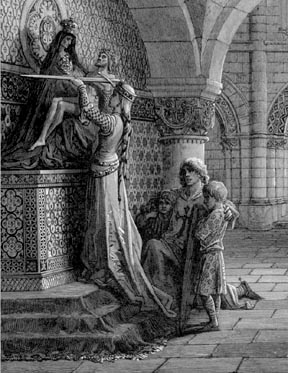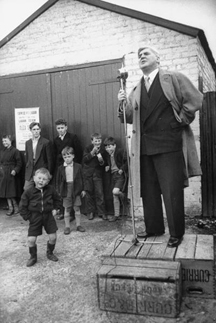
On Saturday I conducted a day of recollection for the Knights of Lepanto. The question as to whether there is such a thing as Catholic masculinity was one of the main topics.
In the course of my presentation I brought up the controversy between Cardinal John Henry Newman and Charles Kingsley. Kingsley accused the recent convert to Romanism, Newman, and the Catholic clergy generally, of dishonesty. The polemical exchange between the two thinkers generated Newman’s masterful defense of his conversion and of the Catholic faith, Apologia Pro Vita Sua.
In the debate, much more was at stake than just the honor of the the Catholic clergy. Kingsley was an advocate of “Muscular Christianity,” a kind of manly expression of Christian faith, which emphasized physical exercise and sport as a necessary balance to a more bookish approach to Christian spirituality. While much can be said for a distinctly manly expression of Christian faith (as is often advocated here), Kingsley went further, by blaming Catholic Marian devotion and asceticism for the emasculation of the Church, and especially Catholic men.
Newman refuted Kingsley soundly, but the assertion that Catholic spirituality produces effeminate men is an idea that remains. Leon Podles in The Church Impotent: The Femininization of Christianity traces the current of bridal spirituality throughout the history of the Church, and even notes the Marian character of western chivalry as a contributing factor to the development of feminine spirituality. He also points out that while St. Bernard was one of the foremost influences on the development of bridal spirituality, he was also the great promoter of the Knights Templar, that is, of militant spirituality. While Podles critiques much of the ascetical and marian dimension of the western Church, he does admit that bridal spirituality is a part of the scriptural data.
Bridal spirituality cannot be jettisoned. Marriage is the fundamental metaphor for the spiritual life. It is the great sacrament as St. Paul says in Ephesians 5. It is the sacrament of nature; man is created male and female, and as such is the image and likeness of God. Christ is, in fact the Bridegroom and the Church the Bride. These realities are too fundamental to minimize.
If we adopt the language of Benedict XVI which he uses in the inaugural encyclical of his pontificate, Deus Caritas Est, and speak about the necessary balancing of eros (possessive love) by agape (oblative love), indeed if we assert the primacy of agape over eros, I think we have the answer to what sometimes might legitimately be perceived a feminizing tendency of bridal spirituality. Asceticism or perhaps better, spiritual discipline need not appear exclusively contemplative and oriented to religious experience. It is also part of the training of the whole man to confront the World, the Flesh and the Devil, our cosmic enemies. Likewise, Marian devotion is not merely the imitation of Our Lady’s virtues, particularly Her feminine virtues, but a commitment to defend all that is true, good and beautiful. Our Captain, Christ the Lord, enters into battle for the sake of His Bride and defeats the Dragon, but only at the oblative cost of His life. Yes, in the end oblation is a manner of submissiveness to the provident will of God. It is obedience. But it is also an undaunted militance. It is warrior spirituality. It seems that the real argument here is about the right balance.
On Saturday, one of the guys asked if I could give a practical example where the critique of Muscular Christianity against Catholic spirituality has shown itself false. After a little thought, I replied that perhaps the best example is the almost universal compromise of Protestantism with contraception. Wayward eroticism not only produces effete men who are more occupied with words and feelings than actions and principles, it also produces, as we know, men who brutally subordinate women to their own desire for sexual gratification. Only in the Church where the Virginity of Our Lady, and the ideals of consecrated chastity have been retained has the full doctrine on the sanctity of matrimony and chaste love survived.
Contraception is a plague upon our world which must be fought to the death, and those who choose to do so face humanly insurmountable odds. Even in nations where the demographics are radically changing and birthrates are well below the replacement rates, governments are finding that their efforts to encourage large families with entitlements are ineffective. The sort of self-indulgence which is involved in contracepting the future has certainly not produced a manly culture. On the other hand, facing the monster and fighting against it, no matter how difficult or lonely the quest might be, is exactly the militant and evangelical spirit necessary to restore manliness to religious experience.
It seems to me that it is only chivalry, specifically Marian Chivarly, that guarantees for men, both prayer and action, chastity and strength, obedience and authority. I will fully admit, though, that if Our Lady remains only and ideal and not the living and acting Queen Mother in the order of grace and prayer, then the extremes are not likely to be avoided.
 Or the Theology of the Soapbox
Or the Theology of the Soapbox
